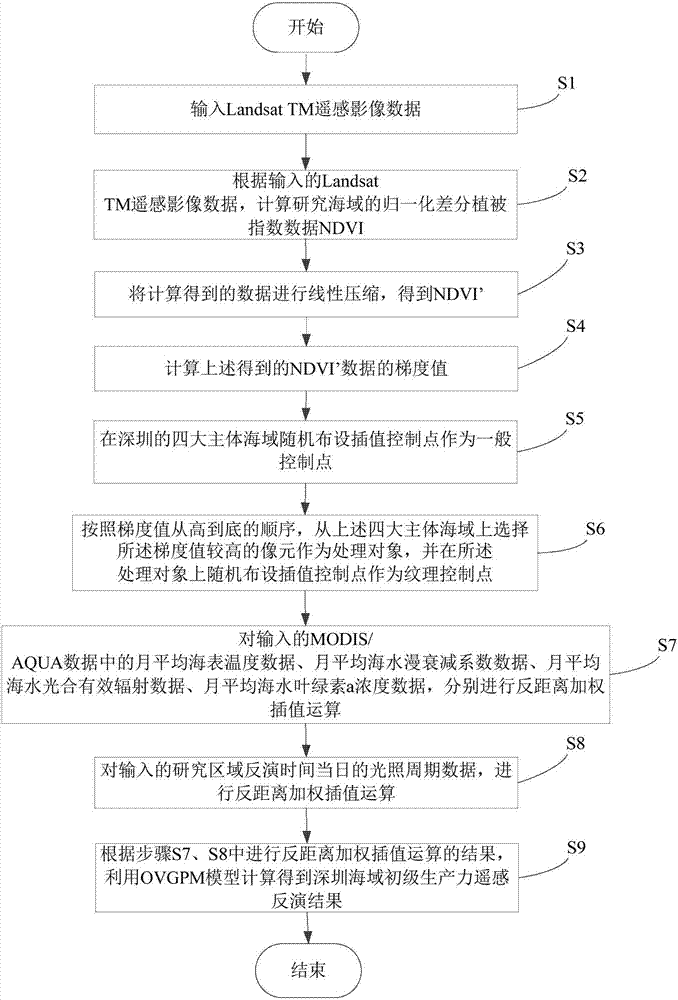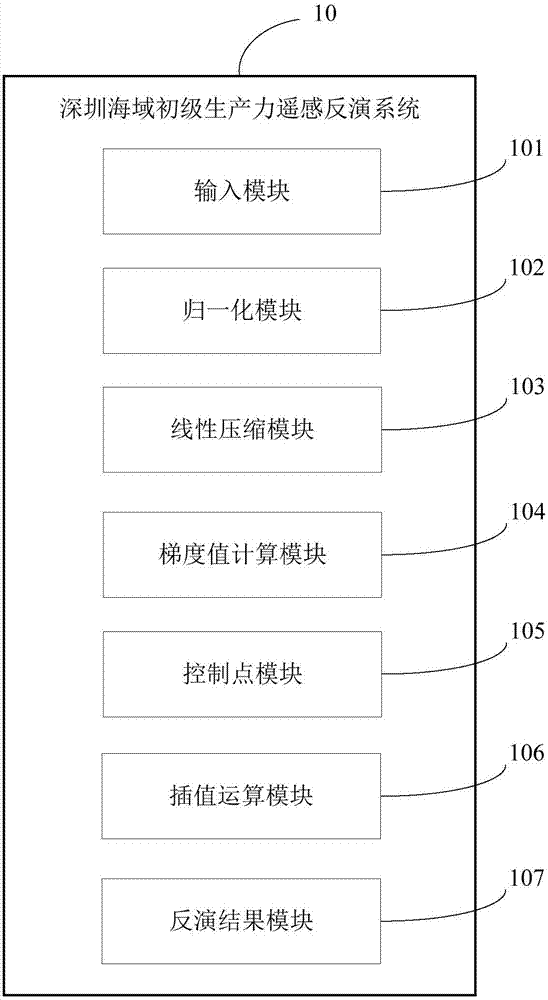Remote-sensing inversion method and system for primary productivity of Shenzhen marine sites
A primary productivity and remote sensing inversion technology, which is applied in resources, instruments, climate sustainability, etc., can solve the problems of the lack of NPP remote sensing inversion technology methods, the difficulty in estimating ocean net primary productivity, and the unsatisfactory applicable scale of remote sensing inversion methods, etc. question
- Summary
- Abstract
- Description
- Claims
- Application Information
AI Technical Summary
Problems solved by technology
Method used
Image
Examples
Embodiment Construction
[0041] The present invention will be described in further detail below in conjunction with the accompanying drawings and specific embodiments.
[0042] refer to figure 1 As shown, it is the operation flowchart of a preferred embodiment of the remote sensing inversion method for primary productivity in Shenzhen sea area of the present invention.
[0043] Step S1, input Landsat TM remote sensing image data. in:
[0044] The Landsat TM remote sensing image data includes 7 spectral segments, namely: 3 visible spectral segments, 1 near-infrared spectral segment, 2 near-short-wave infrared spectral segments, 1 thermal infrared spectral segment, and the 3 visible spectral segments The segments include: blue-green spectrum, green spectrum, and red spectrum; and the 7 spectrum segments are named in turn: B 1 (blue-green band), B 2 (green band), B 3 (red band), B 4 (near-infrared spectrum), B 5 (near short-wave infrared spectrum), B 6 (thermal infrared spectrum), B 7 (near sh...
PUM
 Login to View More
Login to View More Abstract
Description
Claims
Application Information
 Login to View More
Login to View More - R&D
- Intellectual Property
- Life Sciences
- Materials
- Tech Scout
- Unparalleled Data Quality
- Higher Quality Content
- 60% Fewer Hallucinations
Browse by: Latest US Patents, China's latest patents, Technical Efficacy Thesaurus, Application Domain, Technology Topic, Popular Technical Reports.
© 2025 PatSnap. All rights reserved.Legal|Privacy policy|Modern Slavery Act Transparency Statement|Sitemap|About US| Contact US: help@patsnap.com



